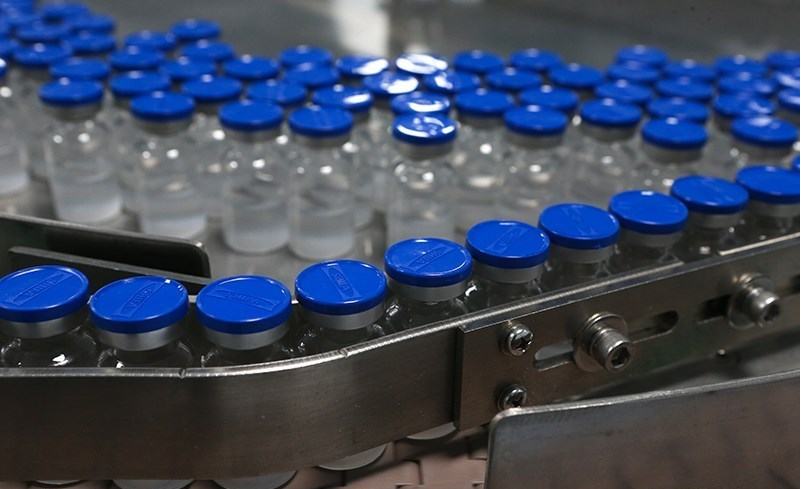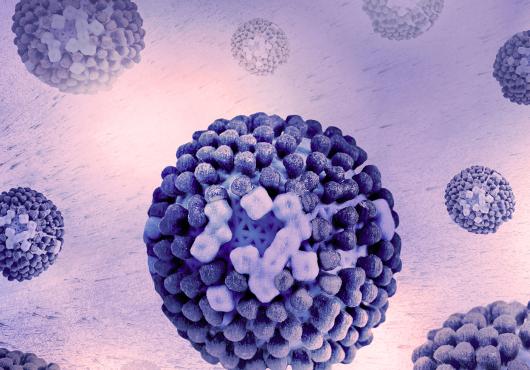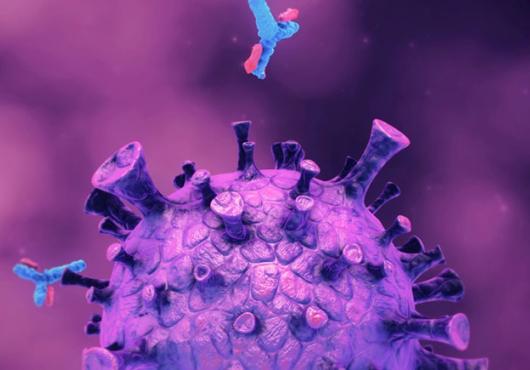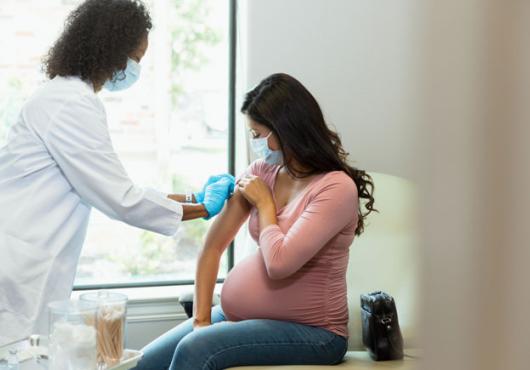
This article is part of Harvard Medical School’s continuing coverage of COVID-19.
As the omicron variant of SARS-CoV-2 continues to splinter into subvariants, questions proliferate about how to advance vaccine strategies for different populations, the effects of repeated boosting, and ways to improve vaccines and vaccination over the long term.
Scientists from the Harvard Medical School-led Massachusetts Consortium on Pathogen Readiness, or MassCPR, discussed these and other topics in COVID-19 research and public health. Experts included:
- Galit Alter, HMS professor of medicine at Massachusetts General Hospital; principal investigator at the Ragon Institute of MGH, MIT, and Harvard
- Jacob Lemieux, HMS instructor in medicine and infectious disease specialist at Mass General; viral variants program co-lead for MassCPR
- Ofer Levy, HMS professor of pediatrics and director of the Precision Vaccines Program at Boston Children’s Hospital
- Jeremy Luban, professor of molecular medicine, biochemistry, and molecular pharmacology at UMass Chan Medical School; viral variants program co-lead for MassCPR
Harvard Medicine News: How do we wrap our minds around reports that each new variant seems to be more transmissible and is spreading faster than the last?
Luban: Calculating those numbers is not easy. Actual observations are affected by so many different issues. Overall, my sense is we’re approaching the same degree of infectiousness as measles.
Lemieux: In the beginning of the pandemic, we talked about R0—the number of others a person with SARS-CoV-2 goes on to infect. Now R0 is less meaningful because it relates to the number of secondary infections in an immunologically naïve population, whereas we have a highly immune population. Now, when a report says that one variant is growing 25 percent faster than another, it doesn’t necessarily mean that the variant is by its nature 25 percent more transmissible; it means that it’s spreading faster within a certain population or in a certain area, which could be for many reasons.
At this point, it’s like what’s faster, a Ferrari or a Lamborghini. These are fast cars. These are highly infectious viruses that will take every opportunity to be transmitted and cause epidemics. We’re seeing that in South Africa right now, throughout the U.S., and all across the world where case rates are going up despite a substantial degree of immunity.
HMNews: Which variants are you keeping an eye on right now?
Lemieux: New variants are circulating in many places and it’s unclear what they all mean. We have one in the northeast U.S., BA.2.12.1, and in South Africa there are newer variants, BA.4 and BA.5. We don’t know whether one is “bad” or better or worse than another, but I’d say the data coming out of South Africa are alarming. It suggests there will be a fifth wave in South Africa, we hope only in numbers and not in morbidity and mortality. BA.4 and BA.5 have arrived in the U.S. We’ll see what the impact is here. It does have a flavor of “here we go again.”
HMNews: What’s the current understanding of infection- versus vaccine-induced immunity and the likelihood that someone will be infected or reinfected with SARS-CoV-2 despite having some level of protection?
Alter: We see that hybrid immunity—a combination of getting vaccinated and recovering from a natural infection—is the most robust correlate for protection against severe disease and death from COVID-19. It’s stronger than natural immunity or vaccine-acquired immunity alone. New studies show that natural infection does expand protection in several ways. There seems to be something special about the immune system encountering the virus in its entirety. Whether that’s related to T cell or B cell responses is still unclear. Tissue-specific innate immune response in the lungs seems to be a critical component. We need to understand the immunology to determine how and when to boost most effectively and which combination of vaccines gives the highest level of durable protection against this virus.
Lemieux: Undoubtedly, reinfection is now a common feature of the COVID-19 syndrome. We don’t know how to calculate the probability by someone’s immune status, like a person who had three vaccine doses and was infected with the beta variant compared to another person who had one vaccine dose and was infected with both delta and omicron. As Galit said, hybrid immunity seems to confer the strongest immunity, and we’d think that reinfection probability is related to strength of immunity. We’ll learn more in the coming months. There’s so much to unpack.
HMNews: What’s the latest research on COVID-19 vaccines and children?
Alter: We still have a problem with the youngest kids in our global population having little vaccine coverage, and yet they are among the groups that have probably seen the most SARS-CoV-2 infection. Across the Mass General Brigham system, we’re asking, are children able to respond to vaccines, do they mount better responses following vaccination than after infection. We want to understand the value of vaccination because there is so much hesitancy when it comes to immunizing children.
In recent work, we’ve followed children ages 5 to 11 and 12 to 19 after their first and second mRNA vaccine doses. We’ve found that the 5-to-11 age group is responding to vaccines with the same antibody levels as adults and probably even more than we’re seeing with teenagers. Even more important is that the levels both groups of children reached with vaccination are far superior to the levels they obtain with natural infection.
We also see that the 5- to 11-year-olds are making way higher levels of specific kinds of functional antibodies compared to teenagers and adults. They’re leveraging their immune systems in a different way.
HMNews: What are some of the advantages and disadvantages of continuing to recommend vaccine boosters against SARS-CoV-2?
Levy: In a rapid review of eight studies in the U.S., we found evidence of a decline in vaccine efficacy in adults 65 years and older. That decline was evident in protection against both infection and disease. This suggests that the FDA recommendation to boost was correct.
Alter: On the flip side, in the HIV field, we’ve learned that repeated boosting isn’t always a good thing. Comparing HIV vaccine clinical trial results suggests that repeated boosting, in one case up to six doses, may increase your antibody levels but shift your overall antibody profile toward types of antibodies that are poorly antiviral. So early vaccine doses may stimulate production of IgG1, our workhorse antibodies, and IgG3, which are potent antivirals, but then a fifth or sixth dose may push more IgG4, which are less effective.
The data we have so far for COVID-19 vaccines, which is up to a fourth dose, indicates that some populations—particularly individuals with short intervals between doses—do seem to be shifting their antibody subclass profiles. It’s a little concerning, but it’s early days. We need to look deeply to see what’s going on and then think clearly about how and when we boost so we don’t reengineer our immune response to be less effective against SARS-CoV-2. Increasing the interval between doses may be key to promoting higher quality protection.
The good news is that “mixing and matching” vaccines doesn’t seem to generate the less effective antibody profiles. Even mixing and matching mRNA vaccines may be advantageous. We need to further study this phenomenon so we get maximal benefit.
Levy: It’s true that the need for many doses over the long term isn’t practical at a population level. Scientists are asking, can we get to a single dose, can we develop a universal coronavirus vaccine. Researchers in our Precision Vaccines Program and around the world are looking at other vaccine platforms, such as nanoparticle- and protein-based vaccines, and at adjuvants, which are molecules that can boost a vaccine’s immune response, broaden that response, reduce the number of doses required, and increase the durability of protection, especially in vulnerable populations with distinct immunity. This approach has proved useful in MassCPR-supported work developing an adjuvanted, protein-based SARS-CoV-2 vaccine that was highly effective in aged animals and helped point the way to a vaccine recently authorized in India called Corbevax.
Alter: Yes, adjuvants are an incredibly important tool to bolster vaccine responses, especially in older populations with aging immune systems. We can draw on decades of influenza vaccine research. Instead of putting more doses into the population, we learn how to get the aging immune system to respond more to a single dose. The analogy my mom uses is you can’t just speak louder to someone who doesn’t know your language; you have to translate the message so the listener—in this case, the immune system—understands it better. Adjuvants could be the translation tools.
HMNews: What gives you hope these days?
Luban: The whole vaccine field is undergoing enormous changes. The opportunities presented to us through being forced to address SARS-CoV-2 are unprecedented. We had very little opportunity in the past to take vaccines apart to understand how they work. We’re getting new information about what confers broad and durable immune responses and which cells or molecules best indicate protection from a virus. It’s exciting to investigate basic principles we’ve wondered about for many years. It may change how we think and how we talk with the public about what’s important.
HMNews: What keeps you up at night?
Lemieux: The need for ongoing investment in this area by Congress and the American people. These things don’t just fall out of the sky. We need to support science and technology. Funding allocations for ongoing investments in COVID haven’t passed Congress, yet we’re staring down a fifth wave. People are tired, but we are going to struggle with coronavirus for the foreseeable future—likely forever—and we should take this opportunity to define a long-term strategy to invest in vaccine research for this pathogen and for others so we can learn how to build better vaccines, roll them out, and save lives. I’m optimistic that if given the resources, scientists, industry, public health experts, and policymakers working together will be able to do this.





